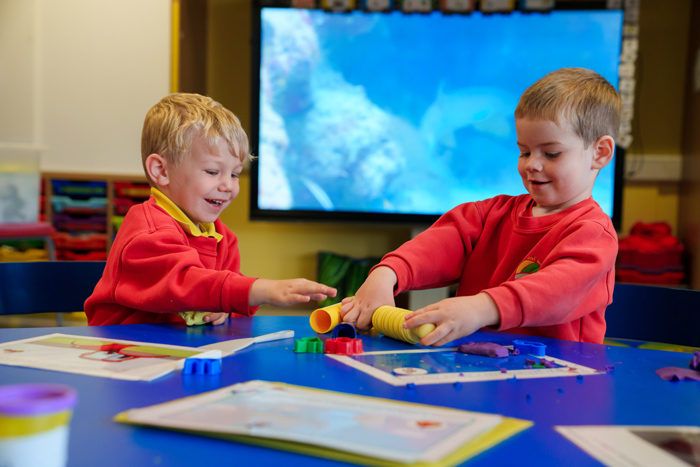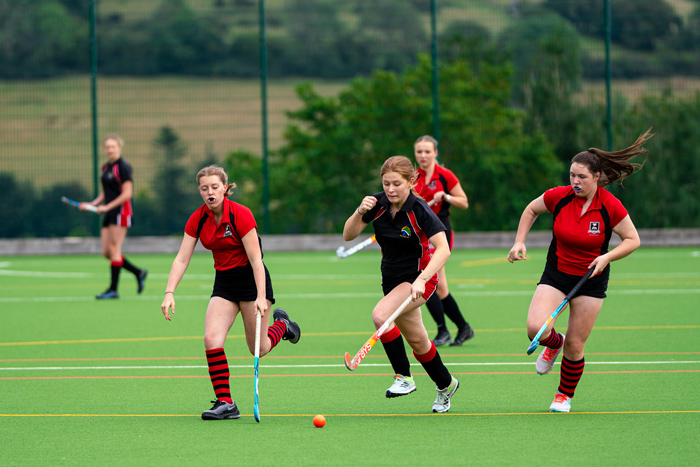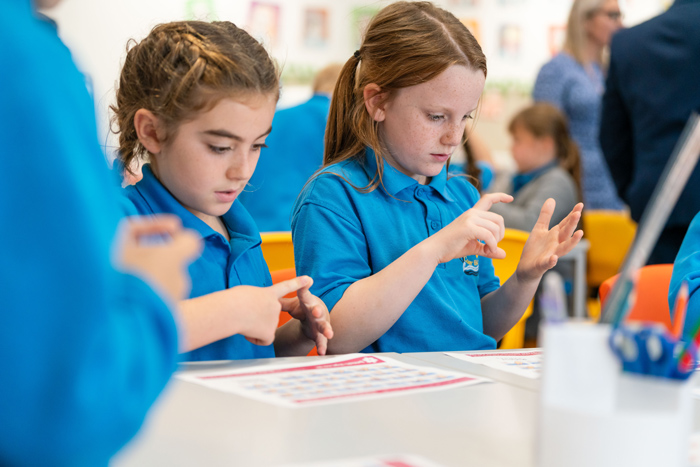Sector report
All-age
2022-2023
Source: Welsh Government Address list of schools. Welsh Government Pupil level annual school census (PLASC).
Providers
27
Number of providers 2023
15
Number of providers Welsh-medium 2023
15
Number of providers with sixth form
Pupils
26,168
No. of all pupils
22,516
No. of pupils 2021-22
22,308
No. of pupils 2020-21
5,836
No. of pupils of primary age
16,726
No. of pupils of secondary age (compulsory education)
1,734
No. of pupils in sixth forms
20%
Percentage of pupils aged 5 to 15 eligible for free school meals
2%
Percentage of pupils aged 5 to 15 with English as additional language (A,B,C)
34%
Percentage of pupils aged 5 to 15 able to speak Welsh
11%
Percentage of pupils aged 5 to 15 with additional learning needs
Core inspections
No. of core inspections: 6
Welsh-medium: 2
English-medium: 4
Case studies
No. of case studies: 3
Follow-up
No. in follow-up September 2022
SM: 1
SI: 0
ER: 0
No. removed 2022-2023
SM: 0
SI: 0
ER: 0
No. went into follow-up 2022-2023
SM: 0
SI: 0
ER: 1
Total in follow-up in August 2023
SM: 1
SI: 0
ER: 1
Useful links
View the sector summary
Read an overview of inspection recommendations
Access reflective questions for the sector
Read about effective practice from the sector
During 2022-2023, all-age schools have worked hard to offer pupils more opportunities to develop their oracy skills and re-establish classroom routines including paired and group work. In the strongest cases, leaders’ careful planning to develop pupils’ skills across the whole age range ensured that, as they progressed through the school, pupils built effectively on what they learnt at an earlier age. However, in most schools across the sector, planning to develop pupils’ skills was not always co-ordinated well enough. Despite strong working relationships between staff and pupils across the sector, in a half of schools inspected, the quality of teaching remained inconsistent mainly due to lack of challenge and low expectations of what pupils could achieve. Many schools had overcome the initial hurdles involved in establishing themselves as a new school and staff morale had improved. However, in the majority of cases, leaders did not focus well enough on the impact of provision on pupils’ learning. For example, when evaluating the quality of teaching, they did not consider its impact on pupils’ progress closely enough.

Teaching and learning
In the schools inspected, pupils’ levels of language and social skills on entry to school were generally lower than those expected for their age. This was particularly the case regarding oracy which was adversely affected by periods of lockdown and lack of social contact during the COVID-19 pandemic. Schools worked hard to offer pupils more opportunities to develop their oracy skills and re-establish classroom routines including paired and group work. Across the schools, the majority of pupils made at least suitable progress over time, and a few made strong progress. Pupils with additional learning needs (ALN) generally made appropriate progress from their starting points.
Once they started school, pupils’ communication skills developed well. By Year 6, many pupils read confidently and fluently from a suitable range of texts, using intonation well. Pupils of secondary age, to a varying degree, analysed texts and used inference and deduction as well as identifying different viewpoints. However, pupils’ higher order reading skills were less well developed. This was often linked to a lack of purposeful opportunities to read in lessons other than language lessons. This was similar when developing pupils’ writing skills. When given the opportunity, pupils wrote with a clear sense of purpose and audience, while the more able pupils wrote with increasing sophistication to engage the reader. In Welsh-medium schools, pupils developed their communication skills equally as well in Welsh and English. However, in English-medium schools, pupils were not given enough worthwhile opportunities to develop their Welsh language skills outside Welsh lessons. This was often because leaders did not place a high enough emphasis on developing pupils’ Welsh and did not include references to Welsh in their improvement plans.
Overall, pupils’ basic numeracy skills were sound. In four out of the six schools inspected, pupils received suitable opportunities to develop these skills in relevant subjects outside of mathematics. In the best cases, teachers planned beneficial opportunities for pupils to apply their numeracy skills in everyday contexts. In half of the schools, teachers provided good opportunities for pupils to develop their digital skills. Where this was the case, from an early age, pupils engaged with digital devices and nurtured the skills required to produce, edit and develop their work. When they reached secondary age, pupils benefited where schools’ planning for progression for digital skills was sound. As a result, pupils in these schools were able to display more advanced skills such as programming, manipulating data and creating images and videos.
The development of pupils’ digital skills, Ysgol Caer Elen
Pupils across the school are making strong progress in developing their digital skills. Most primary age pupils research on the web with confidence, for example to find information about birds and create a file of fun facts. By Year 2, pupils are programming correctly to move a digital tool along a specific path. Many Year 6 pupils present information competently. For example, they access information from the web about body organs including a voice recording to describe the purpose of the organs.
The digital skills of secondary age pupils build successfully on their previous experiences. Many pupils have highly competent digital skills. For example, they create a suitable chart to display the data on the proportional change in life expectancy in African countries. Many are adept at using complex software to compose music, create digital games and design packages to a certain size and layout. Many pupils demonstrate bespoke coding skills, for example to create their own renewable energy websites.
In the strongest cases, leaders’ careful planning to develop pupils’ skills across the whole age range ensured that, as they progressed through the school, pupils built effectively on what they learnt at an earlier age. This led to pupils making rapid progress in their literacy, numeracy, and digital skills. Read about how Ysgol Caer Elen uses co-ordinated planning to develop pupils’ literacy, numeracy and digital competence skills. However, in most schools across the sector, planning to develop pupils’ skills was not always co-ordinated well-enough.
Teachers formed strong working relationships with pupils and ensured an appropriate pace of learning that met the needs of individuals. However, in a half of schools inspected, the quality of teaching was inconsistent mainly due to lack of challenge and low expectations of what pupils could achieve. In addition, the quality of teacher feedback and assessment varied too much and did not always help pupils improve their work. This has led to a recommendation to improve aspects of teaching for these schools.
Since the pandemic, schools continued their developments to implement Curriculum for Wales. Leaders established a clear vision for the curriculum and focused clearly on developing skills and improving teaching. They encouraged teachers to trial new aspects of teaching and, through systematic and accurate evaluation, they adapted their provision. Many schools made good use of outdoor areas and their local communities to enhance pupils’ experiences. The case study provided by Ysgol Penrhyn Dewi VA highlights how they make good use of the local area to enhance pupils’ learning. However, in a half of the schools, the choice of courses for pupils in Key Stage 4 was limited and schools did not always allocate sufficient time for personal and social education for older pupils.

Care, support and well-being
In the schools inspected, the care, support and guidance provided for pupils and their families has been a strength. Pupil well-being has been a priority following the pandemic and, since then, schools have created a safe and inclusive environment for pupils of all ages. They successfully created a culture of safeguarding and care to benefit nearly all pupils. Consequently, most pupils felt safe in school and knew who to turn to if they required support or advice.
Most schools catered well for pupils’ emotional and social needs. They worked well with external partners to offer provision that was well co-ordinated and beneficial to pupils and their families. All-age schools benefited from being familiar with pupils and their families from an early stage. They also worked closely with partner primary schools to ensure smooth transition.
Support for transition and intervention strategies for pupils’ social, emotional and academic needs, Ysgol Idris Davies
Leaders plan a wide range of intervention strategies to address the social, emotional, and academic needs of pupils. They match the correct level of support to their needs and this provision is delivered by a highly skilled and dedicated team of teachers and support staff.
A particular strength of the school is its thoughtful approach to supporting pupils’ learning and progress as they transition from Year 6 to Year 7 within the school and from partner primary schools. For example, the school’s basic skills class supports pupils to make strong progress in their literacy and numeracy skills and also in their well-being.
In many schools, older pupils took on responsibilities to support younger pupils in the school. They organised events and clubs as well as playing a leading role in committees and groups. Most schools provided suitable opportunities for pupils to contribute to decision-making. Pupils voiced their opinion on a range of matters. In a few cases, pupils influenced what and how they learn, especially lower down in the school.
In most schools, provision for pupils with ALN was effective and was a strength. Staff provided carefully planned and monitored support to improve pupils’ skills and respond to their emotional needs. They tracked these pupils’ progress carefully and provided teachers with useful information to help them plan to meet their needs in lessons. As a result, pupils with ALN made at least suitable progress against their targets.
Support for additional learning needs (ALN), Ysgol Cwm Brombil
Staff monitor the progress of pupils with ALN effectively and know their pupils well. They use this information purposefully to ensure that any additional provision is tailored to meet the needs of these pupils. Staff involve pupils, parents and outside agencies effectively to plan pupils’ next steps in learning. The ALN co-ordinators provide beneficial professional learning for all staff.
All schools had focused on strengthening routines and systems to promote good attendance. Staff monitored attendance carefully and followed procedures to deal with absences and poor punctuality. However, despite continued efforts, attendance continued to be a concern and there had not been a marked increase in attendance levels, particularly for vulnerable groups of pupils.
In nearly all schools, most pupils displayed positive attitudes to learning. They behaved well, respected each other and adults and worked well together in groups and pairs. However, teachers and leaders told us that managing pupils’ behaviour was far more challenging than it was before the pandemic.

Leading and improving
Inspectors found that most headteachers had a clear vision for their school that was well understood by staff. Leadership roles were well defined, and responsibilities increasingly spanned the whole age range. Most leaders realised the benefits of working across all ages and establishing common policies, for example on teaching and assessment. Many schools had overcome the initial hurdles involved in establishing themselves as a new school and staff morale had improved. In only a few cases, primary and secondary phases were treated quite separately and did not reflect the true nature of an all-age school.
Leaders in most schools addressed most national priorities well. They paid due attention to ALN reform and changes to the curriculum. In most schools, particular emphasis was placed on mitigating the impact of poverty on pupil attainment and well-being. In a few cases, schools had been inventive in how they supported pupils and families. This included providing food, school uniforms, subsidised educational visits and free musical instrument lessons. Leaders worked hard to ensure that pupils affected by poverty were given equal opportunities to flourish.
Most schools carried out a range of appropriate evaluative activities that collected first hand evidence from the scrutiny of pupils’ work, learning walks and lesson observations, as well as gathering pupil and parent opinions. In a minority of schools, leaders used this information appropriately to identify areas for improvement accurately. However, in the majority of cases, leaders did not focus well enough on the impact of provision on pupils’ learning. For example, when evaluating the quality of teaching, they did not consider its impact on pupils’ progress closely enough. Instead, they looked for teacher compliance and did not identify precisely what needed to be addressed to improve provision.
Leaders in most schools promoted a culture of self-reflection and professional learning. They provided staff with worthwhile opportunities to work with each other and partner primary schools. Professional learning was suitably tailored to individual and school needs. Staff benefited from each other’s specialisms across phases, which contributed further to continuity in provision and approaches across the age range.
Governors were generally supportive of their schools. They managed budgets carefully and understood their statutory roles regarding safeguarding and promoting healthy eating and drinking. They were suitable critical friends but, in a few cases, were not always informed well enough to be able to challenge leaders fully.